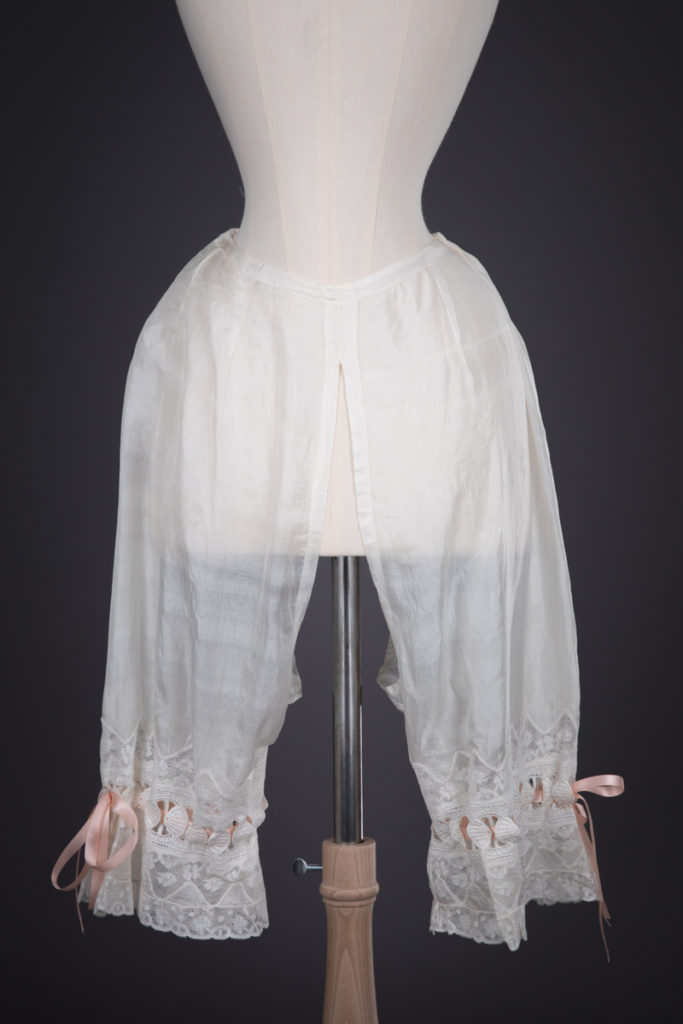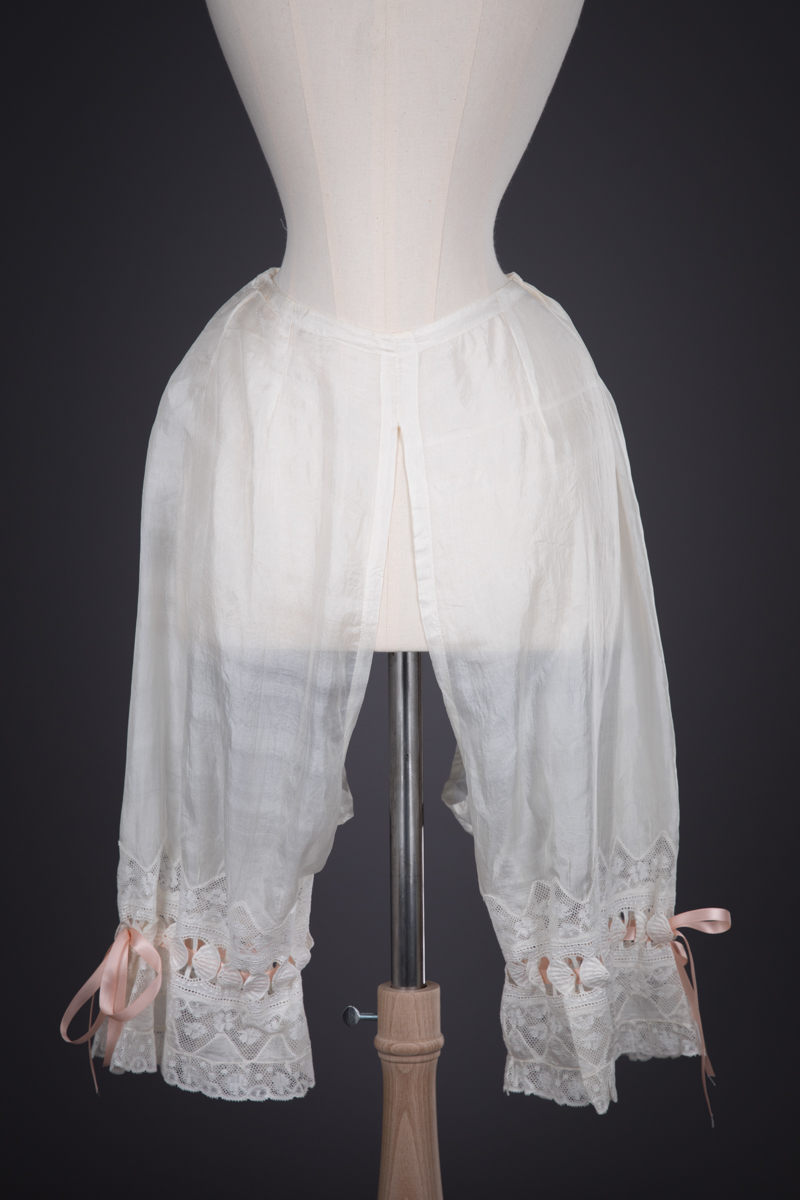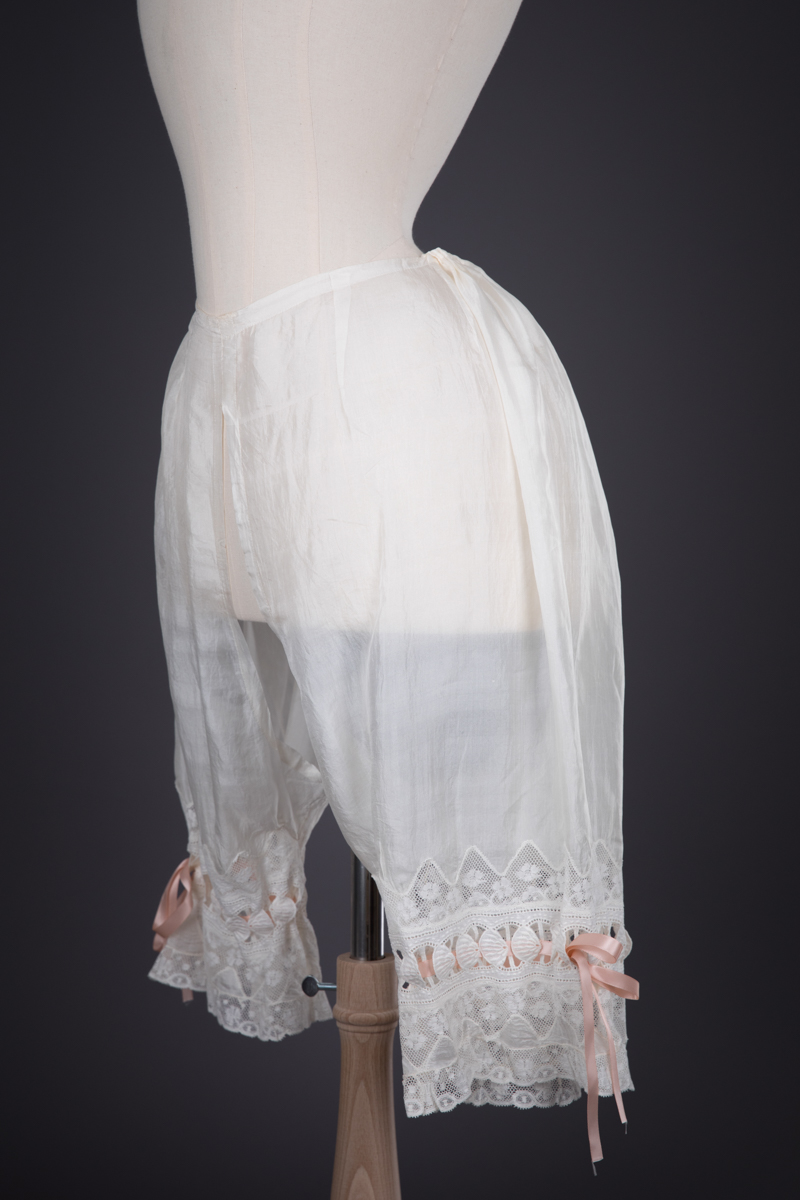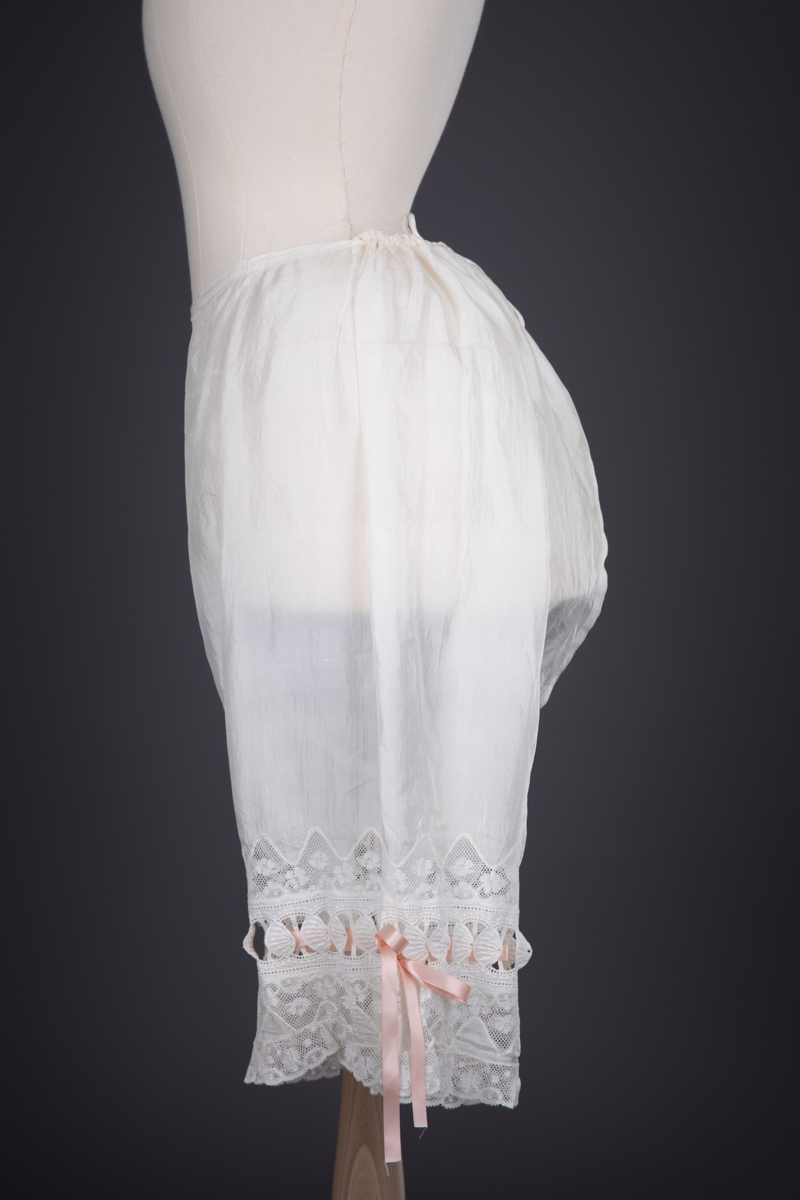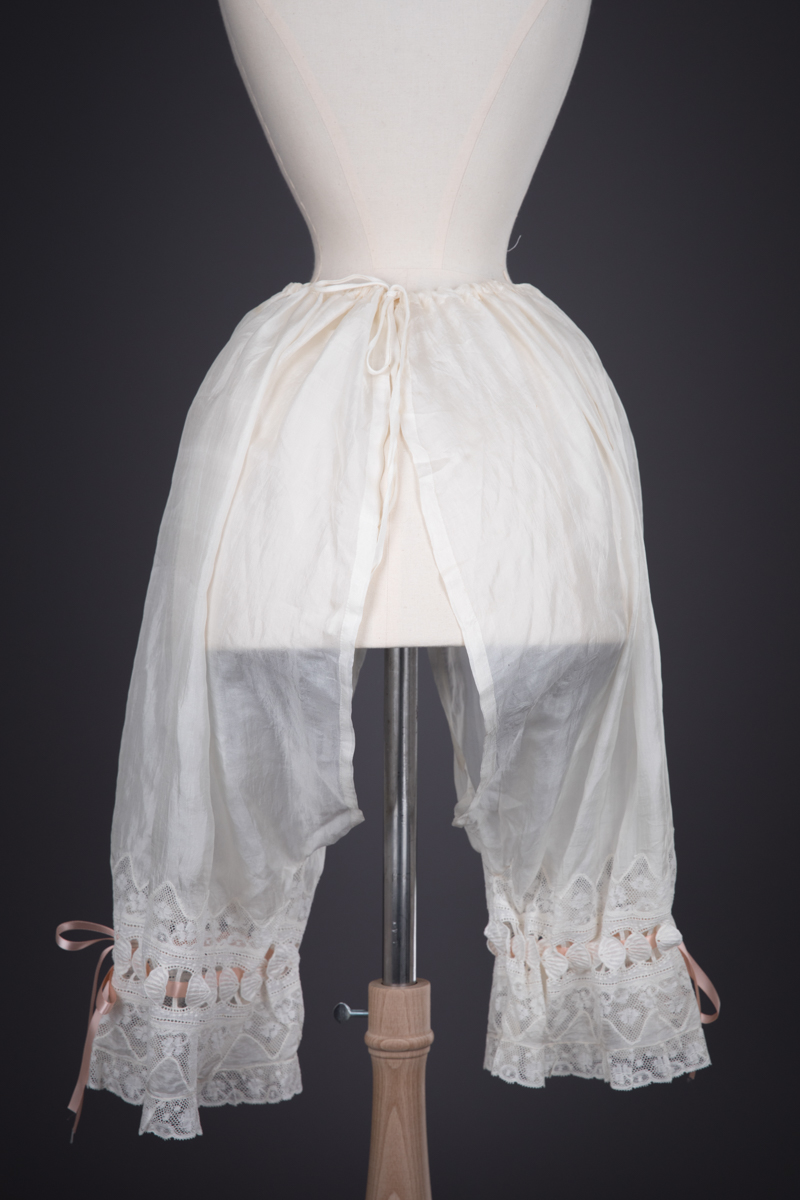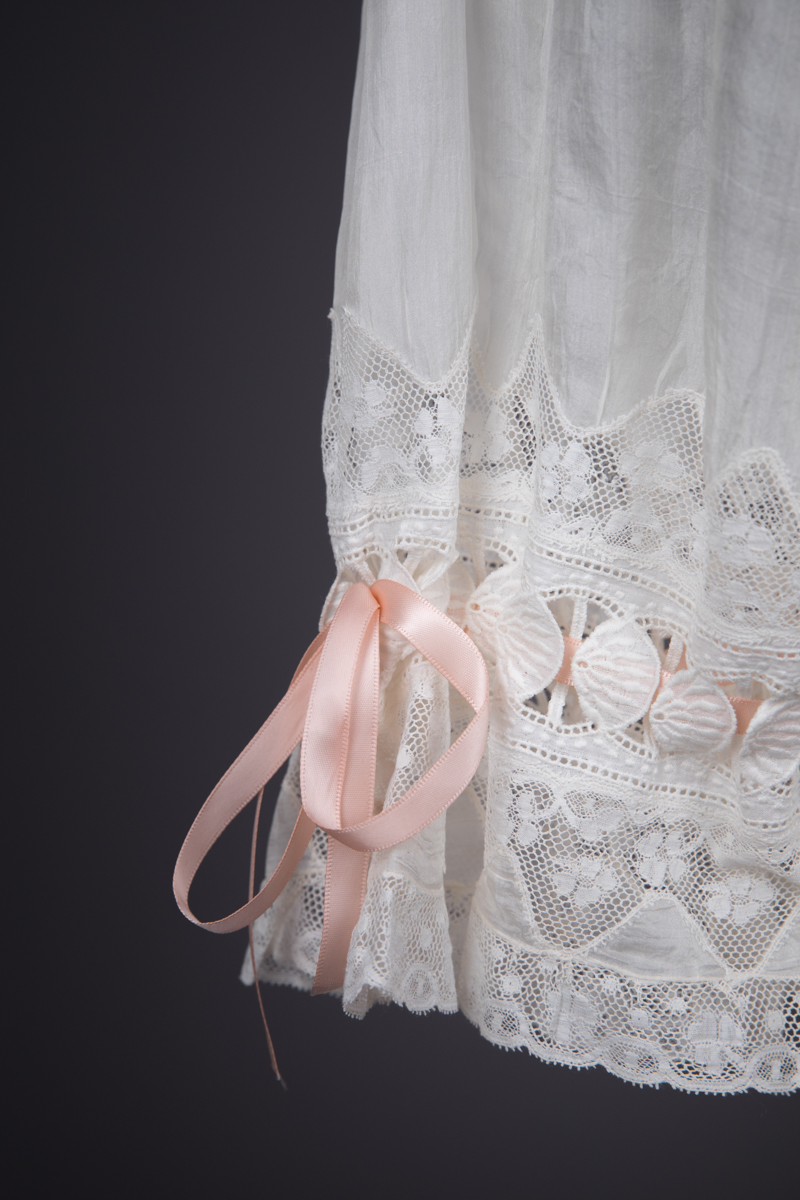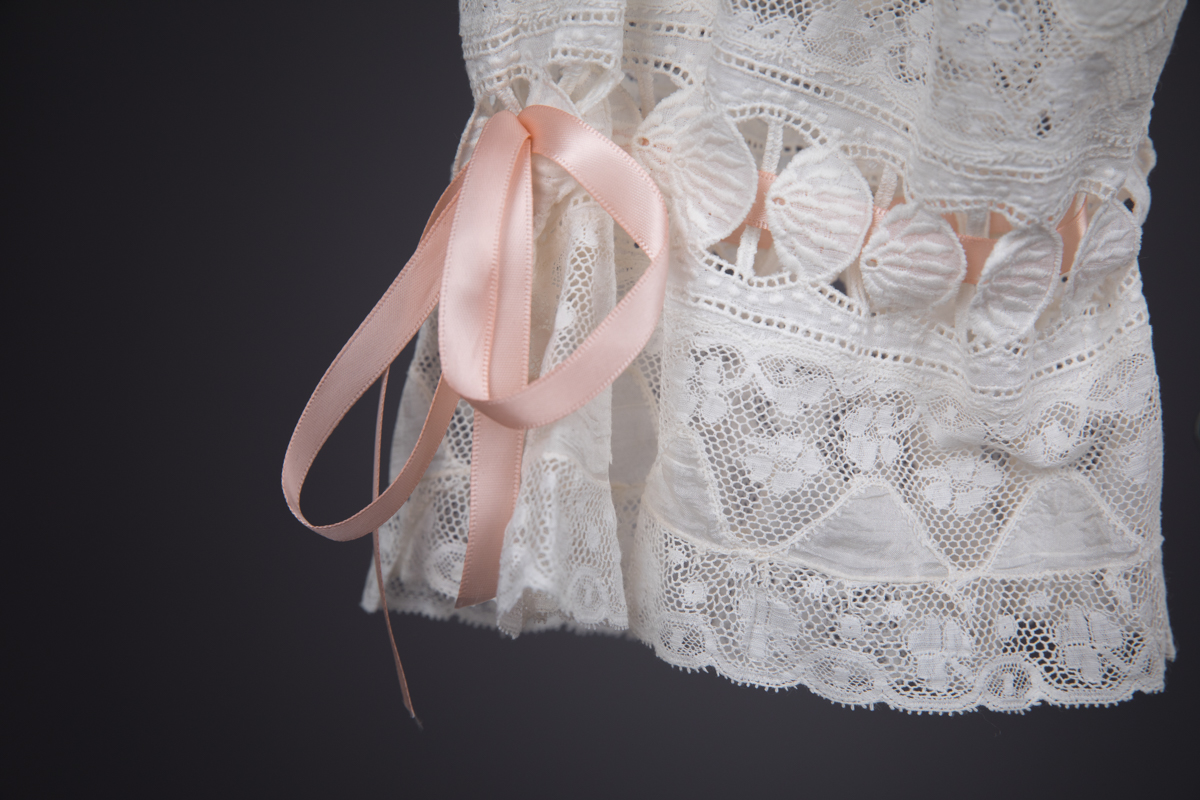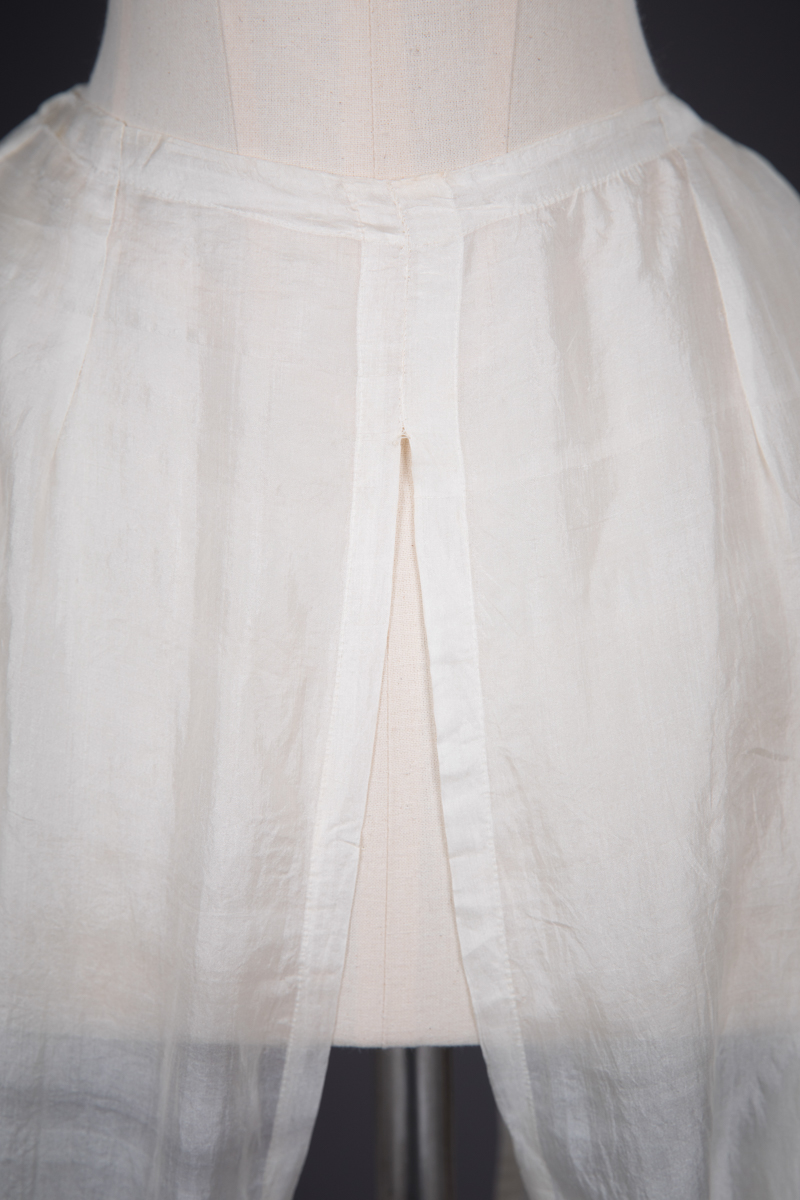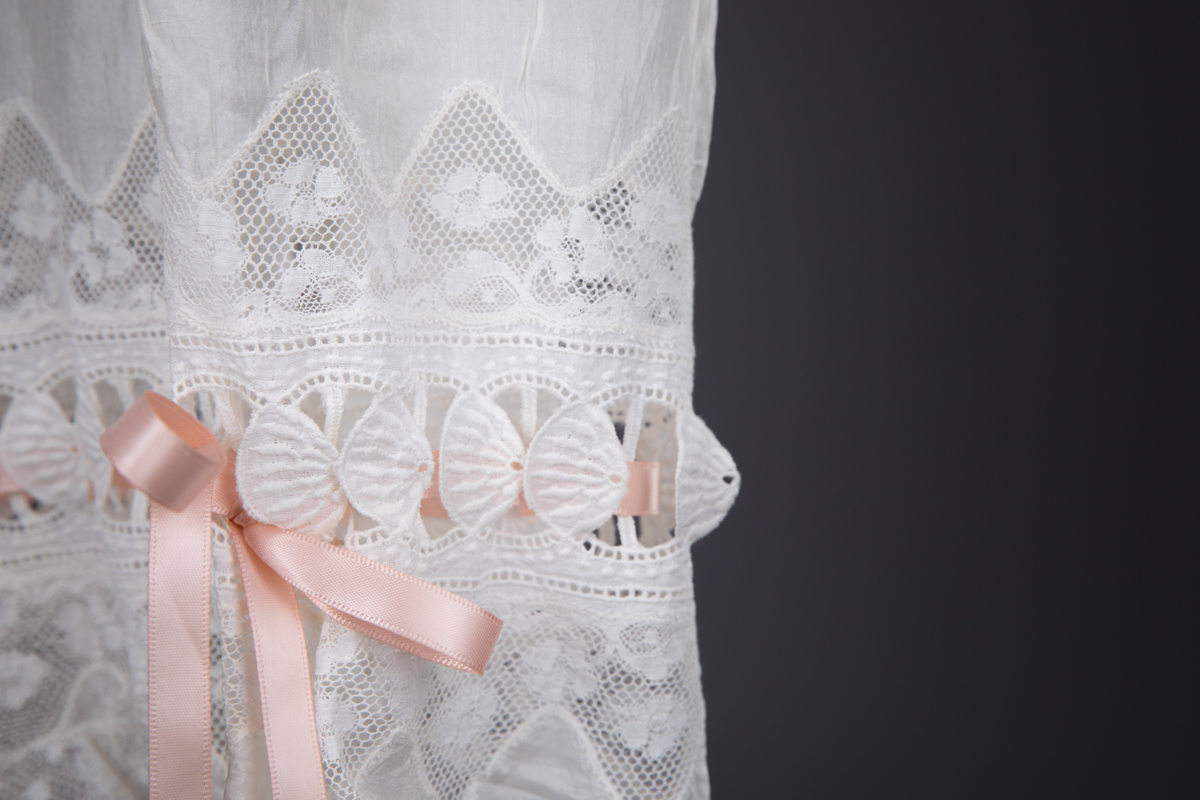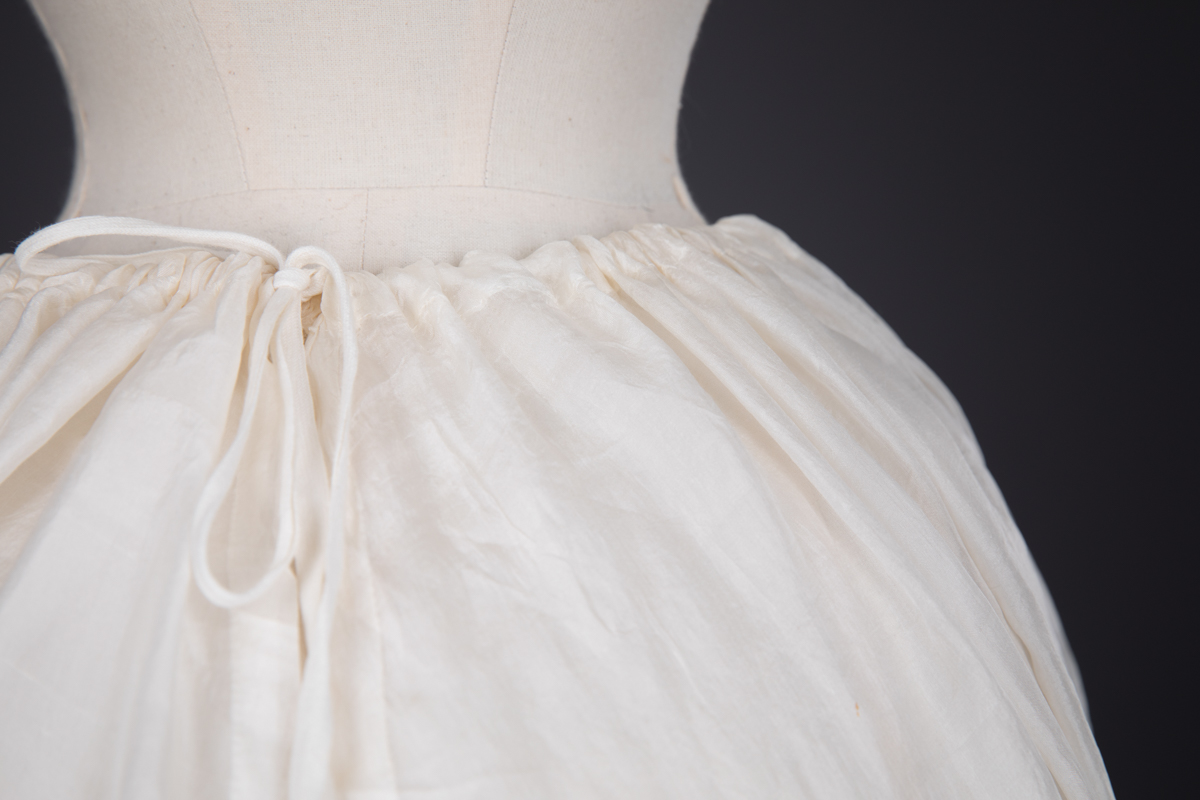Date: c. 1910s
Origin: Great Britain
Fabric: Silk habotai
Brand: Custom made
A luxurious pair of split drawers made in a lightweight habotai silk. Split drawers were commonly worn until well into the 1920s, with the open cut a functional necessity when worn with the multiple heavy layers of outerwear fashion.
During this time period, underwear that was worn against the skin was usually made of fabrics such as linen and cotton for ease of washing; laundry was usually a relatively harsh process, with strong soaps and boiling water. Undergarments would absorb sweat and bodily oils, and were washed often, as it was difficult to effectively clean the more delicate fabrics of outer garments. It’s relatively unusual to see this style made in a fine fabric such as silk, which has to be laundered with extra care. This suggests that this garment was intended as a luxurious piece for a special occasion, such as a wedding trousseau, rather than intended for everyday and practical wear.
The garment is intricately embellished, with each leg cuff boasting several rows of fine Valenciennes insertion lace appliqué, faggoting and broderie anglaise, with the cutwork in the embroidery threaded with silk satin ribbon to cinch the legs in. The waistband of the drawers fastens at the centre back with a silk habotai draw string.
From the collection of Karolina Laskowska
